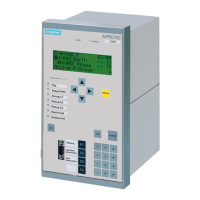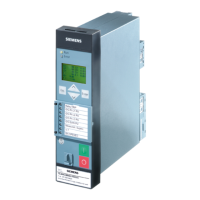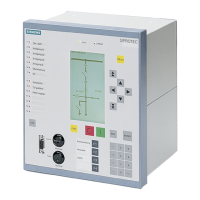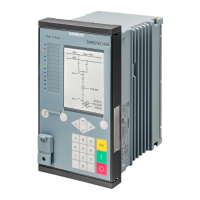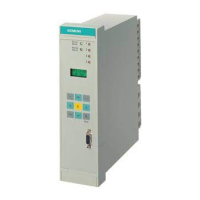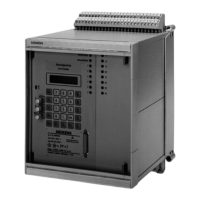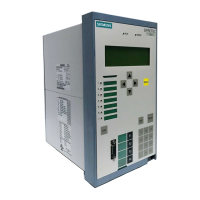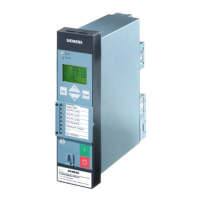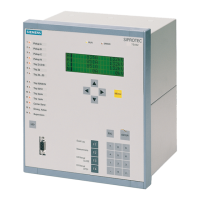2 Functions
194
7SD610 Manual
C53000-G1176-C145-4
2.14 Thermal Overload Protection
The thermal overload protection prevents damage to the protected object caused by
thermal overloading, particularly in case of transformers, rotating machines, power re-
actors and cables. It is in general not necessary for overhead lines, since no meaning-
ful overtemperature can be calculated because of the great variations in the environ-
mental conditions (temperature, wind). In this case, however, a current-dependent
alarm stage can signal an imminent overload.
2.14.1 Method of Operation
The unit computes the overtemperature according to a thermal single-body model as
per the following thermal differential equation
with
In steady-state operation the solution of this equation is an e-function whose asymp-
tote represents the final overtemperature Θ
End
. After reaching the first settable thresh-
old of overtemperature Θ
alarm
, which is below the final overtemperature, a warning in-
dication is issued in order to allow e.g. a preventive load reduction. When the second
overtemperature threshold, i.e. the final overtemperature (= tripping temperature), is
reached, the protected object is disconnected from the network. It is also possible,
however, to set the overload protection to Alarm Only. If this option is set, the device
only outputs an indication even if the final temperature is reached.
The overtemperatures are calculated separately for each phase in a thermal replica
from the square of the associated phase current. This guarantees a true RMS value
measurement and also includes the effect of harmonic content. A choice can be made
whether the maximum calculated overtemperature of the three phases, the average
overtemperature, or the overtemperature calculated from the phase with maximum
current should be decisive for evaluation of the thresholds.
The maximum permissible continuous thermal overload current I
max
is described as a
multiple of the nominal current I
N
:
I
max
= k·I
N
In addition to the k-factor, the time constant τ
th
as well as the alarm temperature Θ
alarm
must be entered as settings of the protection.
In addition to the temperature warning stage, the overload protection also features a
current warning element I
alarm
. It reports an overload current prematurely, even if the
calculated overtemperature has not yet attained the warning or tripping temperature
levels.
Θ – Current overtemperature in per cent of the final overtempera-
ture at the maximum permissible phase current kI
N
τ
th
– Thermal time constant for the heating
I – Present rms current
k – k–factor indicating the maximum permissible constant current
referred to the nominal current of the current transformers
I
N
– Rated current of the device
www . ElectricalPartManuals . com
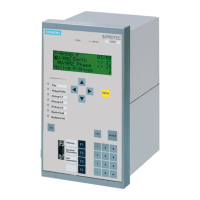
